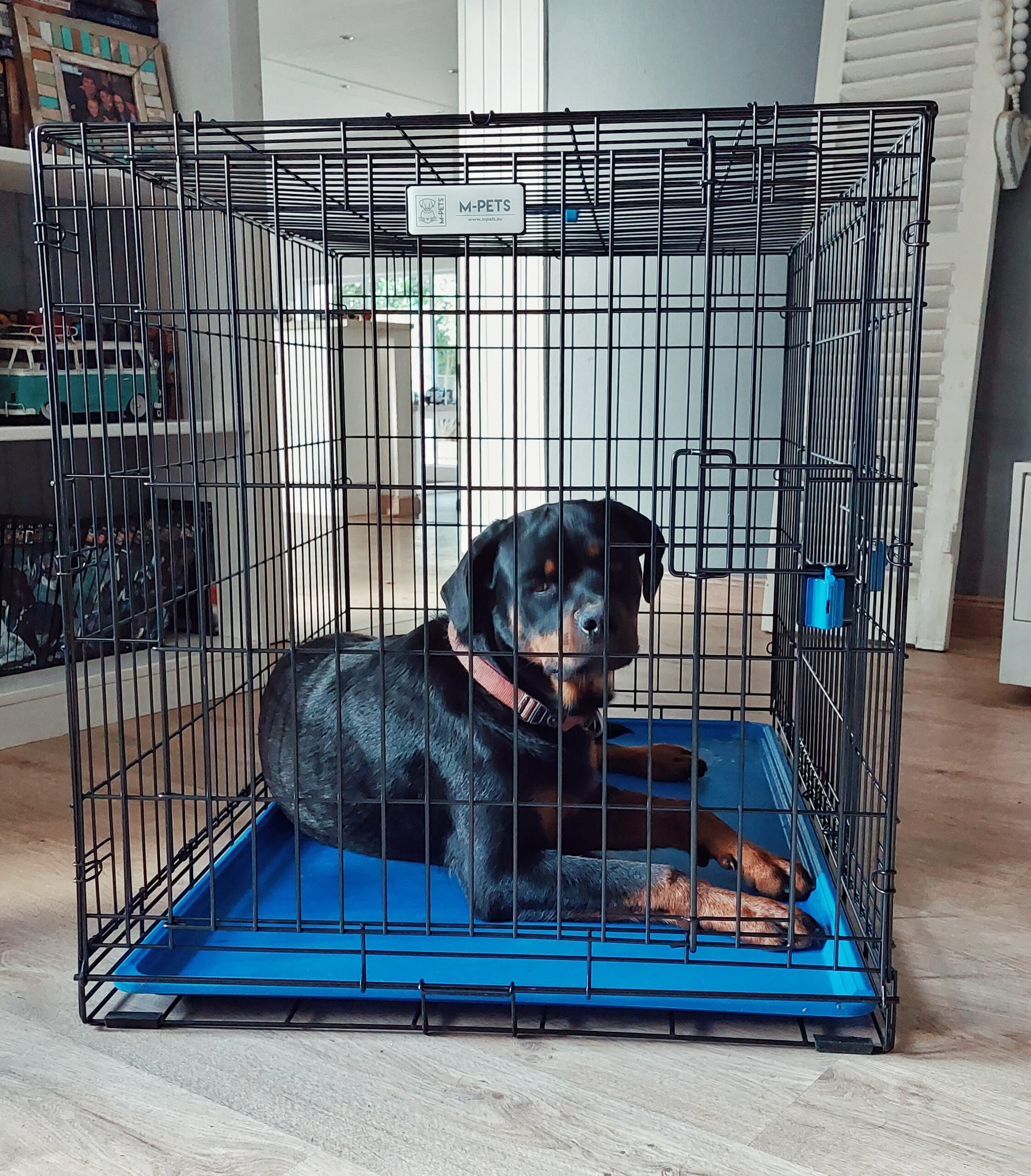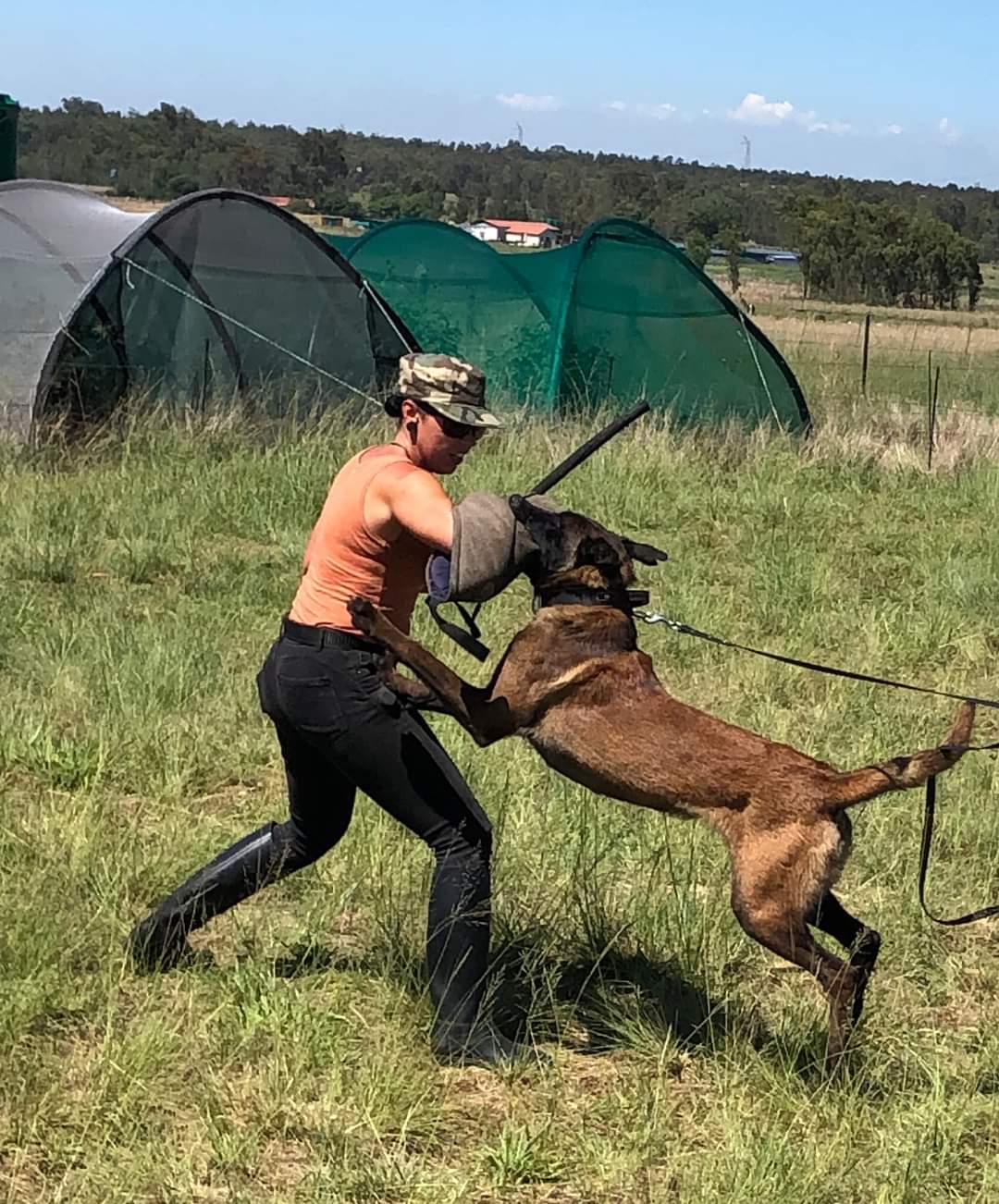Research shows that more than 85% of smallholders have at least one dog on their property and many have three or four. Some are kept purely as pets, and others for security or protection. However, to depend on your dog for security or protection, you need to make sure you have the right dog with the right training and a solid foundation.
“To train a dog to be a guard dog, you need to start at eight weeks old, the drive needs to be tested and the foundation building starts immediately,” advises Gauteng-based K9 trainer Clarice Walton. A good protection dog will have a strong natural drive, along with good discipline and a strong sense of loyalty. Underlying it all, appropriate genetics gives you a bigger chance at the right dog for the right job.
Breeds that are designed to make successful guard dogs include Boerboel, Bull Terrier, Rottweiler, Rhodesian Ridgeback, Dutch Shepherd, and German Shepherd, but the number one breed for this job, in Walton’s opinion, is the Belgian Malinois. She says the dog does not necessarily have to be pedigree, as she’s trained cross breeds that did a great job at learning this skill. She cautions against buying online. “There are lots of scams out there.”

“People tend to choose puppies on how cute they are, which is a big mistake when it comes to giving the dog a job. “When choosing a puppy for protection work, you must choose on drive not cuteness, and you must make sure you meet the parents and interact with them too, not just the puppy,” she says.
In many cases a bitch makes a better protection dog than a male. There has been great controversy over American Pitbull Terriers (APBT) recently. In Walton’s experience, the APBT is a working breed, they make great family dogs with the right training. Unfortunately it’s not about how you raise them, because genetics play a massive role in this breed. It is strongly advised that you get this breed from a reputable breeder. Pitbulls were also used as nanny dogs. However, this breed can be socialised successfully if done correctly, yet it is strongly advised to keep them as only dogs.
All breeds need proper stimulus whether they are a pet or a working dog. Boredom leads to frustration which leads to behavioural issues. We should not underestimate smaller breeds. For example, the Jack Russell Terrier might be small but if properly trained they can be effective guard dogs too. The JR was designed to work and hunt. Most people make the common mistake of getting them for apartment lifestyles, which is not recommended as they will thrive in a smallholding, or farm environment.
Walton recommends that dogs should be crate trained from puppyhood. The crate provides a safe place where the dog can go when it is feeling overwhelmed. The crate meets the natural instinct to make a den. It also helps the dog differentiate between when it is “on duty” and when it is allowed to rest, meaning the dog has a clearly defined understanding of its role as a working dog. Crate training also assists in preparation for your dog going to kennels, or an overstay at the vet, for traveling in a crate when emigrating with owners to another country, for healing purposes, and much more.
She also states that the dog should be kept inside your home at night. “Remember, your dog is an investment.” Plus, a dog being indoors will be better positioned to alerting you, the resident, of an intruder.
A personal protection dog needs one-on-one training and the process can take up to two years. Trainers use a foreign language for this kind of training, to prevent anyone else being able to give commands to your dog. The owner of the dog needs to be on hand for the training, as they also need to be taught how to manage the dog.
Training for protection dogs is far more complex than the training one will receive at a regular puppy class. If you are interested in training a dog specifically for guarding and protecting, you must make your trainer aware of this right from the beginning, so that they can tailor the programme for protection. This will include working on desensitisation, drive and discipline.
Over time the dogs are taught to bite on command, and release the bite on command. Training a protection dog needs to be ongoing and consistent. Once your trainer has given you the tools to manage your dog, you will need to continue practicing your dog’s skills and commands regularly. Keeping any dog is a commitment and a responsibility. Not only must it be well fed and kept well groomed, but it should also be up to date with inoculations, deworming and tick and flea treatments.
They need to be stimulated and need adequate exercise. Many smallholders believe that the dogs have lots of space and places of interest to explore on a plot, and indeed they do, but most will not go out into the fields on their own. Having freedom isn’t enough, they still need obedience, mental and physical stimulus. Walking your dog around the block is not enough. A working dog, such as one trained for protection and guarding, must also be given time to play and rest.

Image: Clarice Walton
Naturally, also, fencing must be adequate, both in terms of the size of the apertures in wire fences, and in terms of the height of the fence, to keep the dogs on the property. Likewise, it goes without saying that attention must be paid to ensure that the dogs don’t escape when opening and closing gates. This is where obedience makes a difference. You need to set boundaries for your dog from the beginning.
To learn more about training your dogs in personal protection or otherwise contact Clarice Walton, K9 Trainer, on 071 911 4102.

